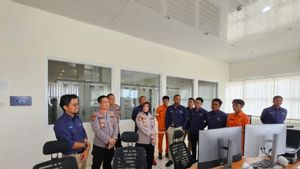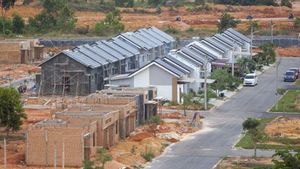JAKARTA - The Ministry of Industry is developing competent human resources through vocational training and education, as well as collaborating with the industrial sector in the Kendal area, Central Java.
Head of the Industrial Human Resources Development Agency (BPSDMI) of the Ministry of Industry, Arus Gunawan emphasized that the development of human resources is part of the current government's priority program to meet the industry's needs for the availability of competent human resources (HR).
This is because skilled human resources are one of the keys in an effort to increase productivity and create innovation in the industrial sector.
"With the support of reliable human resources, of course our industry will be more globally competitive. In the end, if the performance of the industrial sector becomes better, it will encourage national economic growth," said Arus Gunawan in Jakarta, Tuesday, November 1.
Arus said that one of the vocational education units of the Ministry of Industry in the industrial area was the Furniture and Kayu Processing Industry Polytechnic (Polifurneka). The campus that stands on an area of 19,000 square meters is located in the Kendal Industrial Estate, Central Java.
"We already have a number of vocational education units which include 11 Polytechnics, two Community Academys, and nine SMKs. In addition, there are 7 Industrial Training Centers (BDI), all of which are under the auspices of the Ministry of Industry's BPSDMI," he added.
The Kendal polyfurneka, which has been operating since 2018, is a collaboration between the Indonesian government and Singapore. This partnership is an effort to build the Kendal Industrial Estate.
In addition, in implementing the education model in Polyfurneka Kendal, Indonesia cooperates with SECO Switzerland to implement a dual system model based on competence.
"The construction of this Polifurneka is in order to answer the needs of the furniture industry in the availability of competent workers. Moreover, the furniture industry requires an innovation of attractive products and designs so that it can be competitive in the domestic market to exports," said Arus.
According to the Indonesian Crafts and furniture Industry Association (HIMKI), the relocation of furniture and handicraft industries from China will encourage the absorption of local work tengoes. This is because the furniture and handicraft industry is a labor-intensive sector.
HIMKI also said that the availability of competent human resources in the furniture industry will boost its export performance. Indonesia targets the export value of furniture and handicraft products to reach 5 billion US dollars by 2024.
Meanwhile, the export value of furniture and handicrafts in the first quarter of 2022 has reached US$1 billion, an increase of 15.87 percent compared to the export value in the first quarter of 2021.
HIMKI targets the export value this year to reach 3.93 billion US dollars and increase to 4.46 billion US dollars by 2023.
The English, Chinese, Japanese, Arabic, and French versions are automatically generated by the AI. So there may still be inaccuracies in translating, please always see Indonesian as our main language. (system supported by DigitalSiber.id)











